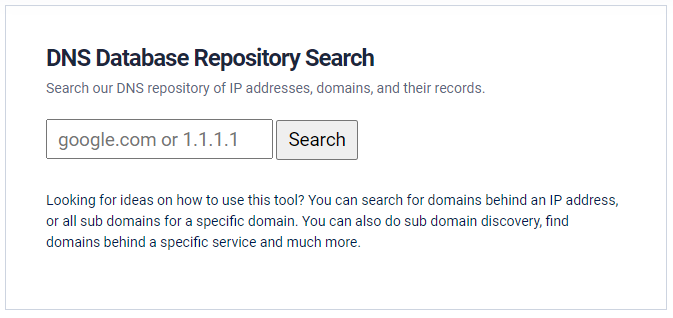For over a decade we’ve been building large-scale networks. Those networks generate massive volumes of real-world DNS usage data that help us detect and mitigate attacks. When asked what made our defenses different, it always came down to two things:
- The ability to collect and record data, and
- The ability to derive intelligence from this data.
Today, that hasn’t changed—what has changed is our desire to expose more of these insights to help network and security professionals. The need is even more urgent as Attack Surface Management (ASM) gains momentum. In 2015, during an onboarding call with a large enterprise, we asked a simple question: “How many sites do you have?” The silence that followed said it all. You can’t protect what you don’t know exists.
DNS Archive — A Free Network Visibility Tool
DNS Archive is built directly from our global edge footprint. It leverages utilization data as we observe it across our platforms. With this tool, analysts can quickly identify parts of their footprint that may be exposed—or discover forgotten assets entirely. It’s equally useful for forensics and general discovery.
Here are a few things you can easily do with DNS Archive:
- Find the domains hosted on a given IP;
- Find domains using a specific subdomain;
- Find subdomains associated with a specific domain;
- Find domains hosted by a specific platform.
This is just the beginning. DNS Archive sits at the core of how our intelligence works across all products, and we’re committed
to exposing more of those data points to help you do your job. Have ideas? Email
support@noc.org with what you’d like to see—if we collect it and can safely expose it,
we will.
Your friendly neighborhood admins..
NOC — Authoritative DNS, CDN & WAF
Accelerate and protect your sites with global DNS, edge caching, and an always-on web application firewall.
See Plans